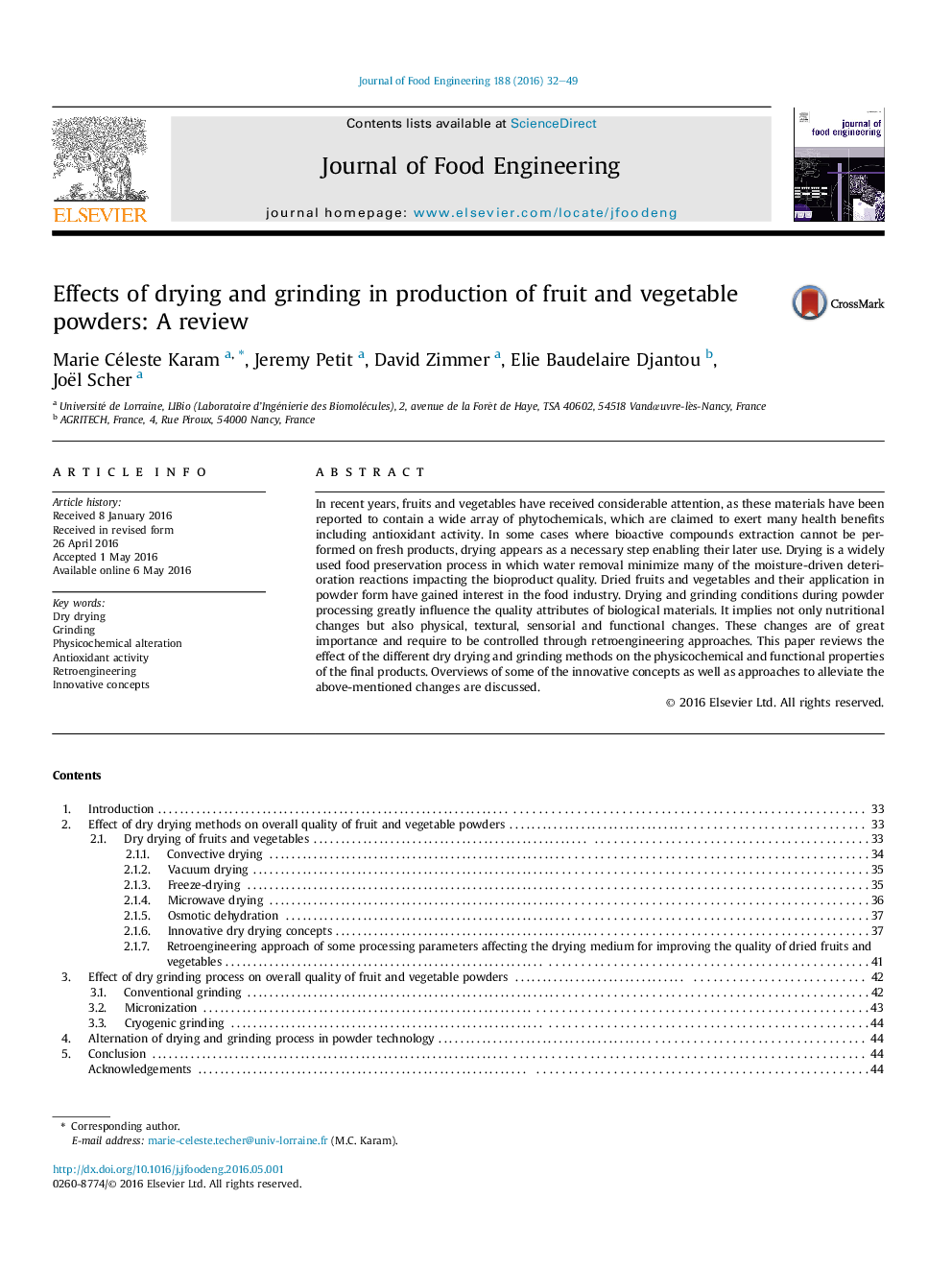| Article ID | Journal | Published Year | Pages | File Type |
|---|---|---|---|---|
| 222608 | Journal of Food Engineering | 2016 | 18 Pages |
•Features of traditional dry drying processes of fruits and vegetables are compared.•Innovative drying concepts (ultrasounds, microwaves, electric fields) are reviewed.•Guidelines for process parameters to monitor drying-induced product alterations.•Micronization, conventional and cryogenic grinding of dry fruits and vegetables.•Alternation of Drying and Grinding: a new approach for fruit and vegetables powders.
In recent years, fruits and vegetables have received considerable attention, as these materials have been reported to contain a wide array of phytochemicals, which are claimed to exert many health benefits including antioxidant activity. In some cases where bioactive compounds extraction cannot be performed on fresh products, drying appears as a necessary step enabling their later use. Drying is a widely used food preservation process in which water removal minimize many of the moisture-driven deterioration reactions impacting the bioproduct quality. Dried fruits and vegetables and their application in powder form have gained interest in the food industry. Drying and grinding conditions during powder processing greatly influence the quality attributes of biological materials. It implies not only nutritional changes but also physical, textural, sensorial and functional changes. These changes are of great importance and require to be controlled through retroengineering approaches. This paper reviews the effect of the different dry drying and grinding methods on the physicochemical and functional properties of the final products. Overviews of some of the innovative concepts as well as approaches to alleviate the above-mentioned changes are discussed.
